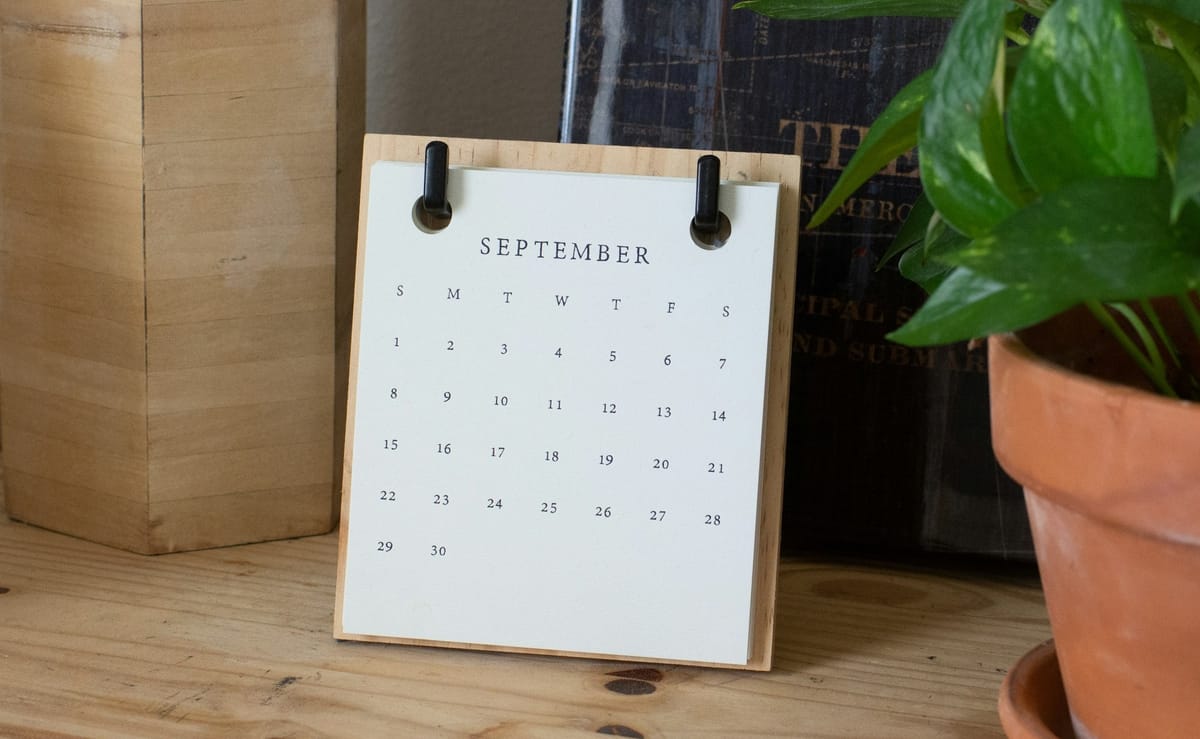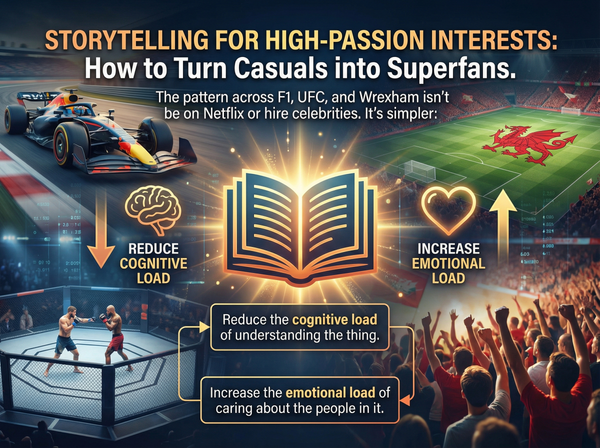A Guide to Seasonality & Promotional Calendars

In consumer behavior, demand isn't a still pond - it consists of peaks and troughs. Understanding these fluctuations – known as seasonality – and strategically planning for them with a promotional calendar is essential for maximizing demand and optimizing ad spend.
This in-depth guide will help you to anticipate, plan for, and capitalize on these predictable shifts in consumer behavior, turning them into powerful levers for growth.
What is Seasonality?
Seasonality refers to predictable changes in consumer behavior, demand for products/services, and market activity that occur at regular intervals over time. While often thought of as annual, seasonality can also manifest as:
- Annual Seasonality:
- Calendar Events: Public holidays (Christmas, Easter, Halloween), national days (Independence Day), cultural celebrations.
- Retail Events: Black Friday, Cyber Monday, Amazon Prime Day, back-to-school, Valentine's Day, Mother's Day, Father's Day.
- Weather/Climate: Winter vs. Summer clothing, outdoor vs. indoor activities, seasonal produce.
- Industry-Specific Cycles: Tax season for accountants, wedding season for planners, vacation periods for travel agencies, academic terms for education.
- Media/Entertainment Cycles: Release of major films, TV series, video games, or sporting events (Olympics, World Cup).
- Micro-Seasonality (Weekly, Daily, Hourly):
- Weekly: Higher engagement on social media during weekends, B2B conversions spiking mid-week.
- Daily: Commute times for podcast listening, evening for online shopping.
- Hourly: Lunch breaks for content consumption, late night for niche communities.
Examples:
- A swimwear brand will see demand peak in summer months.
- A tax preparation service will experience a surge in queries leading up to tax deadlines.
- A confectionery business will see spikes around holidays like Easter and Christmas.
- Even B2B SaaS companies often see increased budget allocations and purchasing decisions towards the end of fiscal quarters or year-end.
Why Mastering Seasonality is Important
Understanding and actively planning for seasonality provides many strategic advantages:
- Optimize Ad Spend & ROI:
- Strategic Allocation: Instead of spreading your budget thinly, you can concentrate spend during peak demand periods where your ads are more likely to convert.
- Lower CPAs: By aligning your messaging with inherent consumer intent, your ads become more relevant, potentially leading to higher CTRs and lower costs.
- Higher ROAS/POAS: Increased conversion rates during peak seasons directly translate to better returns on ad investment.
- Enhanced Customer Experience:
- Timely & Relevant Messaging: Delivering promotions for winter coats in summer is ineffective. Tailoring content to the season shows you understand your customers' immediate needs.
- Anticipation of Needs: Providing helpful content or offers before a seasonal need arises positions you as a valuable resource.
- Inventory & Operations Management:
- Reduced Waste: Aligning marketing with sales forecasts helps prevent overstocking or understocking.
- Smoother Logistics: Marketing teams can better coordinate with operations, shipping, and customer service to handle anticipated surges.
- Content & Creative Planning:
- Forward-Thinking Content: Develop blog posts, social media content, email campaigns, and ad creatives well in advance, themed around upcoming seasonal events.
- Consistent Brand Voice: Maintain a coherent brand narrative across all touchpoints throughout the year.
- Competitive Advantage: Your competitors are likely planning for seasonality too. Ignoring it means falling behind. Mastering it allows you to outmaneuver them.
Building Your Marketing Weather Map: Identifying Your Seasonal Trends
Before you can plan, you need to analyze your unique seasonal patterns.
- Historical Data Analysis (Your Most Valuable Asset):
- Sales Data: Look at monthly, weekly, and even daily sales volumes for your products/services over the past 2-3 years. Identify consistent peaks and dips.
- Website Traffic: Analyze traffic spikes and drops in Google Analytics or similar tools.
- Conversion Rates: Do certain periods consistently have higher conversion rates?
- Ad Platform Data: Examine ROAS, CPA, CTR, and conversion volume by month/week/day for past campaigns. Did search volumes for your keywords increase during specific times?
- Email Open/Click Rates: Do engagement rates with your emails fluctuate seasonally?
- Social Media Engagement: Are there times of the year your audience is more active on certain platforms?
- Product-Specific Data: If you sell a range of products, analyze seasonality for each category, as they might have different cycles.
- External Trend Analysis:
- Google Trends: A powerful free tool to see search interest over time for specific keywords related to your industry or products. This is excellent for identifying emerging or declining seasonal trends.
- Industry Reports: Trade associations and market research firms often publish reports on seasonal consumer spending or industry-specific cycles.
- Competitor Activity: Observe when your competitors launch major campaigns or promotions.
- Weather Patterns: For climate-sensitive products, consider regional weather forecasts.
- Qualitative Insights:
- Sales Team Feedback: Your sales reps are on the front lines. They know when customers typically buy, what objections arise at certain times, and when budgets open up.
- Customer Service Queries: Are there specific times of year when certain types of customer questions or issues spike? This could indicate a need to pre-empt with content.
- Customer Surveys/Interviews: Directly ask customers about their buying habits related to seasons or events.
Visualizing Your Data: Create charts that plot your key metrics (sales, traffic, conversions, ad spend) against time. Look for consistent spikes and valleys. Identify why these occur.
Crafting Your Promotional Calendar
Once you understand your seasonality, the promotional calendar becomes your strategic blueprint. It's a living document that maps out all your major marketing activities, campaigns, and content around known seasonal peaks and promotional opportunities.
Key Components of an Effective Promotional Calendar:
- Core Calendar Events:
- Annual & Quarterly Milestones: Major holidays (global, national, religious), fiscal year ends, industry conferences.
- Retail Peaks: Black Friday/Cyber Monday (BFCM), Prime Day, Valentine's Day, Mother's/Father's Day, Back-to-School.
- Seasonal Shifts: Start of summer, autumn, winter, spring.
- Company Specific Dates: Anniversaries, product launches, sales events.
- Marketing Goals for Each Period:
- Peak Season: Maximize sales, drive high-ROAS conversions, acquire new customers.
- Shoulder Season (Leading up to/after peak): Build awareness, nurture leads, drive pre-orders, clear old stock.
- Off-Season/Downtime: Brand building, content marketing, lead generation for longer sales cycles, customer retention/loyalty, testing new strategies.
- Campaign Breakdown by Channel: For each period/event, detail the specific activities:
- Paid Ads (Search, Social, Display, Video):
- Budget Allocation: Higher spend during peak.
- Creative Themes: Tailored to the season/promotion.
- Offer Strategy: Specific discounts, bundles, free shipping.
- Audience Targeting: New prospects, retargeting warm audiences.
- Bid Strategy Adjustments: More aggressive bidding during high-intent periods.
- Email Marketing:
- Campaign Sequences: Pre-event announcements, day-of reminders, post-event follow-ups.
- Segmentation: Specific offers for loyal customers vs. new leads.
- Content Marketing (Blog, Video, Guides):
- Themed Content: Gift guides, seasonal recipes, holiday tips, summer travel guides.
- SEO Focus: Targeting seasonal keywords.
- Content Repurposing: Adapt existing evergreen content to be seasonally relevant. For example, a blog post on Easy Weeknight Dinners could be retitled Quick Dinners for Summer Evenings and re-promoted with new seasonal images.
- Social Media:
- Organic Posts: Themed content, countdowns, user-generated content campaigns.
- Influencer Collaborations: Partnering with creators for seasonal pushes.
- Website/E-commerce:
- Homepage Banners: Reflecting current promotions.
- Landing Page Updates: Tailored to specific campaigns.
- Pop-ups/Exit Intent: Seasonal offers.
- Offline Marketing: In-store promotions, local events, print ads.
- Paid Ads (Search, Social, Display, Video):
- Key Deadlines & Responsibilities:
- Content Creation: When does copy need to be written?
- Creative Design: When do images/videos need to be ready?
- Ad Build/Setup: When should campaigns be built and launched?
- Landing Page Prep: When should pages be updated?
- Team Assignments: Who is responsible for what?
Strategic Considerations for Seasonality & Promotions
Merely having a calendar isn't enough; true optimization lies in the strategic nuances.
- The Pre-Heat Phase:
- Don't wait until the day of the promotion. Start building anticipation weeks or even months in advance for major events.
- Examples: Run brand awareness campaigns, launch content marketing pieces (e.g., Your Guide to Holiday Shopping), build retargeting lists, collect email sign-ups for early access to deals. This lowers acquisition costs during the competitive peak.
- Competitive Intelligence during Peak Seasons:
- Monitor competitor ad spend and creative during key seasonal moments. Are they offering deeper discounts? Are they focusing on different product lines?
- Use tools like SEMrush or SpyFu to keep an eye on their keyword bidding and ad copy. This informs your counter-strategies.
- Offer Strategy & Scarcity:
- Tiered Offers: Instead of one flat discount, consider tiered offers (e.g., 10% off, 15% off $100+, 20% off $200+).
- Bundles & Cross-Promotional Opportunities: Package complementary products for seasonal appeal (e.g., sunscreen and after-sun lotion in summer; hot chocolate mix with a mug in winter). Consider cross-promoting products or services that align with a seasonal need (e.g., travel insurance during summer vacation planning, cold and flu remedies with tissues in winter).
- Urgency & Scarcity: Limited stock, Offer ends soon, While supplies last can be powerful motivators during promotional periods.
- Post-Promotion Strategy (The Cool Down Phase):
- Customer Retention: Don't abandon new customers acquired during a peak. Immediately nurture them with welcome sequences, loyalty programs, and relevant content. This maximizes their LTV.
- Sales Follow-Up: For longer sales cycles, ensure your sales team follows up on leads generated during promotions.
- Performance Review & Iteration: Analyze what worked and what didn't. Document learnings for the next year. This feedback loop is crucial for continuous improvement. Ask specific questions:
- Did our ad spend align with the demand curve?
- Which creatives performed best during the seasonal push?
- Were there any unexpected spikes or dips?
- Did new customers acquired during the promotion have a higher or lower LTV?
- What logistical challenges did we face?
- Flexibility is Key: Adapting to Macro Trends:
- While a calendar provides structure, be prepared to adapt. Unpredictable global events or macro-economic shifts can override or significantly alter predictable seasonal patterns.
- Build in buffer time for content creation and campaign setup. Regularly review external factors and be ready to pivot your strategy, messaging, and even budget allocation rapidly.
- Don't Neglect the Off-Season:
- These periods, while slower for sales, are ideal for:
- Brand Building: Investing in upper-funnel activities (content, awareness campaigns).
- Audience Nurturing: Developing stronger relationships with leads.
- Testing: Experimenting with new ad formats, channels, or audiences without high-pressure sales targets.
- Content Creation: Producing evergreen content that can be leveraged year-round, or repurposing existing content for seasonal relevance.
- Maintenance: Cleaning up ad accounts, optimizing landing pages, reviewing analytics.
- These periods, while slower for sales, are ideal for:
- Forecasting & Budgeting Integration:
- Your promotional calendar is the bedrock of your marketing budget. Each planned campaign should have a projected spend, leading to monthly and quarterly budgets.
- Use historical seasonal data to forecast demand and revenue, allowing for more accurate financial planning and resource allocation.
- This also feeds into staffing plans for customer service and fulfillment.
- Internal Communication & Alignment:
- The promotional calendar isn't just for the marketing team. Share it widely with sales, product development, operations, customer service, and even finance.
- Ensure everyone is aware of upcoming promotions, anticipated demand surges, and how their role contributes to success. This fosters a truly cohesive business strategy.
Your Marketing Almanac
Seasonality and a planned promotional calendar are powerful strategic levers. They empower you to:
- Anticipate: Understand when and why your audience engages.
- Optimize: Allocate resources where they will yield the highest return.
- Connect: Deliver relevant messages at the precise moment of need.
- Dominate: Outmaneuver competitors by being prepared and proactive.
- Adapt: Remain agile in the face of unpredictable market shifts.
Keep Crushing!
- Sales Guy

